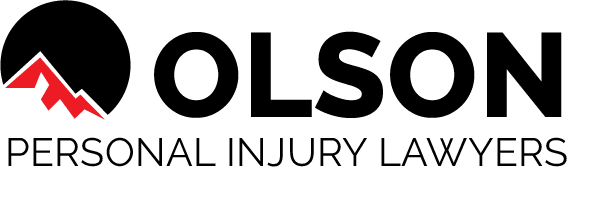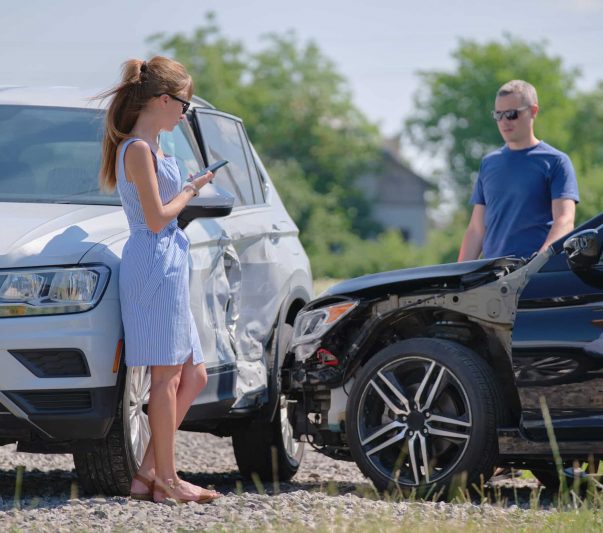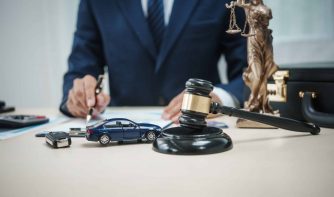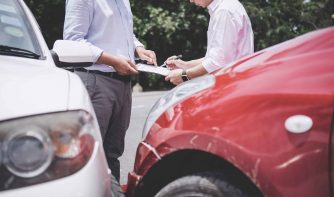A car accident claim is generally worth the total of your damages, but several factors can impact how much you actually collect. Insurance policies have coverage limits, meaning if your damages exceed the policy’s cap, you can only recover up to that amount. While suing an uninsured driver for the remaining balance is an option, it may not be worthwhile if they lack the financial resources to pay a judgment.
Many accident victims also underestimate their damages or accept an insurance offer too soon, only realizing later the true cost of their losses. Consulting a car accident lawyer before starting the claims process can help ensure you seek the full compensation you deserve.
Additionally, Colorado and Wyoming follow modified comparative negligence laws, which means you only need to prove the other driver was primarily at fault, not entirely responsible. However, if you are found partially at fault, your compensation will be reduced by your percentage of fault. For example, if your damages total $30,000 but you are 10% at fault, you would receive $27,000 instead of the full amount.
Do You Have to Prove the Uninsured Driver is at Fault to Make an UM/UI Claim With Your Insurance?
Yes. Uninsured/underinsured motorist insurance (also called UM/UI) is designed to protect you from getting stuck with a bill for damage caused by an uninsured or underinsured motorist. If the other driver wasn’t at least primarily responsible for the crash, you can’t collect on a UM/UI policy regardless of their lack of insurance. The uninsured driver can, however, collect from your liability insurance if you are mostly at fault (more than 50 percent).
Fault in an accident is not always simple to determine, which is one of several reasons we recommend consulting a lawyer about your car accident claim, whether or not the other driver is insured. If there is strong evidence that you were mainly responsible, we will look at other options for covering your damages, such as MedPay or Collision coverage (which are optional add-ons you might have on your auto insurance).
How Long Does a UM/UI Claim Take?
It depends on several factors, including how much ambiguity there is about fault, the insurance company’s willingness to negotiate, and the amount of damages involved. Generally, cases where the fault is relatively easy to establish move more quickly. Cases with high amounts of damages often take more time for us to negotiate a settlement because we have to ensure all your losses are covered.
How is Fault Established in a Car Accident?
Obtaining a police report is often the first step in proving fault. If the other driver was ticketed, it can serve as key evidence, though they may still argue you contributed to the crash. If both drivers were ticketed, the case may be more complex, but an attorney can help dispute unfair claims.
Our team gathers additional evidence, including:
- Witness statements – Some witnesses may have left before police arrived or were overlooked.
- Video or photos – Security or dashcam footage can be crucial but is often deleted quickly. If you took pictures at the scene, they can also help.
- Black box data – Most cars made after 2012 have event data recorders (EDRs) that log speed, braking, and other crash-related details.
- Smartphone records – These may indicate if the other driver was distracted at the time of the accident.
Gathering this evidence quickly is key to building a strong case.
Negotiating with the Insurance Company
Negotiating a car accident settlement can take weeks or even months, depending on the case. The process typically involves discussions with the at-fault driver’s insurance company, but if they are uninsured, a settlement may be arranged through the injured party’s uninsured/underinsured motorist (UM/UIM) coverage. A significant portion of negotiations focuses on determining fault, as insurers often attempt to shift some blame onto the injured party to reduce the payout. Many individuals find it challenging to push back against these tactics on their own.
An experienced car accident lawyer plays a crucial role in countering these strategies by gathering and presenting evidence to minimize the client’s percentage of responsibility. This evidence submission process takes time, and responses from insurance companies can be slow. Attorneys persistently follow up with adjusters and keep clients informed throughout, but the negotiation phase can extend for months, depending on the insurer’s responsiveness.
Discussing Damages in Your Car Accident
Aside from fault, we may also negotiate about your damages. Sometimes the insurance adjuster will concede that the other driver was at fault but may question some of your costs. They might, for example, argue that you don’t need a certain medical treatment, and we will fight to get you the treatment you need.
Recovering after a car crash can be challenging, especially when dealing with injuries and insurance claims. Our experienced car accident attorneys are here to take the burden off your shoulders and fight for your rights, so you can focus on healing.
What Other Situations Are Covered by UM/UI Insurance?
UM/UI insurance will usually cover hit-and-run accidents once the insurer is confident that the police are unlikely to identify and locate the driver. If the driver is located after the fact, the insurance company will recover their expenses from the other driver’s insurance through a process called subrogation.
You can also use UM/UI insurance if you are struck by an uninsured driver while walking or riding a bike – you don’t have to be in your covered vehicle at the time. Additionally, UM/UI will cover passengers in your car who are injured up to the policy limit.
What If Your Damages Exceed Your UM/UI Policy Limit?
We will look for other ways to recover your remaining damages. In certain situations, if you have multiple cars covered by your insurance, you may be able to “stack” your policy coverage. For instance, if you have $50,000 in stackable UM/UI insurance on your two cars and $80,000 in damages, you could get $30,000 from the policy covering your second car, even though it was not involved in the accident. Coupled with the $50,000 in UM/UI coverage on your first car, you would get your $80,000 in damages paid in full.
Once your own insurance policies are exhausted, we will consider if a lawsuit against the other driver is likely to be productive. In rare cases, we might also consider a claim against a third party who contributed to the accident. For example, in some situations, a bar or restaurant could be liable if they served alcohol to someone who was either underage or visibly intoxicated, and that person later drove drunk and caused your accident.
Find Out What Your Uninsured Motorist Claim is Worth
If you think you’ll wait for the insurance company to tell you, please reconsider. As noted earlier, insurance companies frequently undervalue claims. For this reason, we advise anyone who’s been in a car accident to speak with an experienced car accident lawyer to determine your damages. Your lawyer will go over all possible damages in your case and what they might be worth, then help you arrive at a number to pursue.
Have you already received an offer from the insurance company? It’s not too late to get legal advice, and we strongly suggest doing so before you sign anything. If the insurance company’s offer is fair, you can go ahead and sign it. If not, we can help you negotiate for a more comprehensive settlement.
If you or a loved one have been injured by an uninsured or underinsured driver in Colorado or Wyoming, please contact the Olson Personal Injury Lawyers for a free consultation about your case.







